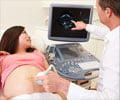- Non-invasive technique called low intensity focused ultrasound pulsation (LIFUP) jump-starts the nonfunctioning neural circuits and brings man out of coma.
- LIFUP produces direct neuro-modulation of nuclei in the thalamus non-invasively and without affecting intervening tissues.
- The patient was able to regain consciousness and language comprehension three days after the experimental treatment.
- The technique opens a new door to help treat human patients suffering from disorder of consciousness (DOC).
The Problem of Waking up Asleep
Modern science has it made it possible to treat and increase survival rates of even the most severe brain injuries causing coma. However, a significant number of patients that recover from coma, do not achieve complete recovery and wake up to a disorder of consciousness, like vegetative state or minimally conscious state. These states cause the patients to lose all autonomy with no treatment options available, putting a great amount of emotional and financial stress on the family.The Non-invasive Ultrasound that can Wake you up from Coma
The low-intensity focused ultrasound pulsation (LIFUP) study was led by Martin Monti, a UCLA associate professor of psychology and neurosurgery. The first man to ever have received the treatment has made great progress after waking up from coma. The treatment method uses sonic waves to stimulate the neurons in the part of the brain called thalamus which is the center for information processing. While there are other neuro-modulatory techniques like deep brain stimulation (DBS) and transcranial direct current stimulation (tDCS), they have severe limitations. In addition to not being able to increase a patients behavioral responsiveness, DBS is an invasive surgical procedure that requires the implantation of devices into the body that can lead to damage to surrounding tissue. tDCS, on the other hand is non-invasive, but does not achieve direct neuro-modulation, it does so by stimulating other parts of the brain which are in contact with the thalamus, like the pre frontal cortex.LIFUP is an alternative procedure that can directly cause neuro-modulation in the nuclei of the thalamus by not causing any harm to the intervening tissues.
Limitations of the Study
It is important to remember that this is the first person to be given this experimental treatment and the results may not be applied to everyone who undergo this procedure. The research team plan on conducting trials to determine if LIFUP could be used consistently as a treatment for people who are in a coma.Also, the success of this recovery cannot be fully credited to the ultrasound technique.
“It is possible that we were just very lucky and happened to have stimulated the patient just as he was spontaneously recovering,” Monti said.
If the technique is found to be a success, this could open a new door to help treat patients suffering from a disorder of consciousness (DOC). Building a low-cost, portable device to help “wake up” patients completely from their comas, is also not far away.
References:
- World First: Ultrasound Used to “Jump-Start” Patient’s Brain out of a Coma - (https://futurism.com/world-first-ultrasound-used-to-jump-start-patients-brain-out-of-a-coma/)
- Monti, M., Schnakers, C., Korb, A., Bystritsky, A. & Vespa, P. Non-Invasive Ultrasonic Thalamic Stimulation in Disorders of Consciousness after Severe Brain Injury: A First-in-Man Report. Brain Stimulation 9, 940-941 (2016).
Source-Medindia
















